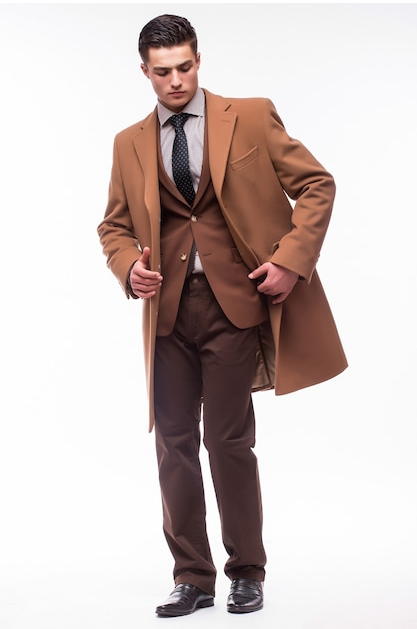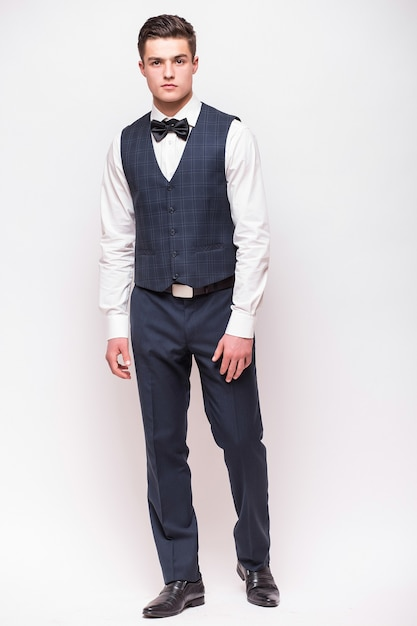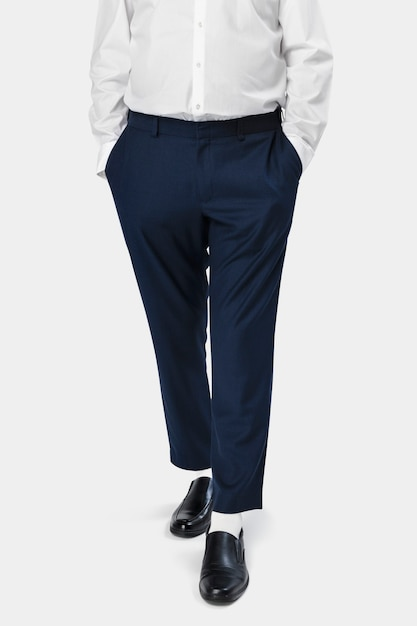
When it comes to dressing sharp, every single detail counts, and that includes the length of your dress pants. A well-fitted pair of pants can really tie your look together, but knowing how long dress pants should be and the right type of pant break for your body shape and occasion is key to a polished look. The following guide will walk you through the various types of pant breaks, how to measure dress pants, and what kind of break works with which body types and setting.
Pant Break refers to how your pants sit on your shoes and the fold or crease that occurs at the bottom of the pant leg. The break affects the whole look of your pants, hence it is an important aspect of tailoring. The right pant break ensures that your trousers complement your shoes, body shape, and the formality of the occasion.
Knowing your options for pant breaks will help you select the perfect fit for your body and ensure that your dress pants aren't too short or too long. If you are looking for a custom apparel manufacturer to craft perfectly fitted dress pants or suits, it's essential to understand the various pant break styles.
Pant breaks come in different styles, each of which complements various body types and occasions. Whether you prefer a more casual style or a formal look, your choice of pant break can make a significant impact on your overall appearance.
If you are preparing for a formal event, consider opting for a custom formal wear solution that takes into account your body shape and preferred style. Custom tailoring will help you achieve the perfect pant break and overall fit for your outfit.

Full break is the most traditional and formal look. It happens when the bottom of the pant leg sits on the top of your shoe and creates a more noticeable fold or crease. This kind of break works with classic or relaxed fits, offering a more conservative look. Full breaks are typically seen in formal business attire or older styles.
A half break falls midway between a full and a quarter break. When a half break is on, the pant barely touches the top of the shoe and can almost form a crease. It's popular because it provides more modern styling, while it still does not abandon that sense of full-break formality. Versatile, the half break works in either business applications or in a semi-formal context.

The quarter break is shorter in length, where the pant leg rests a little above the shoe. It forms a small crease just above the shoe, giving a sharper and more modern look. This break is perfect for slim or tapered fit trousers and is quite common in casual and smart-casual settings.

A no break simply means the pant leg barely touches the shoe or doesn't touch the shoe at all. This is sleek, modern, and minimalist. It's usually seen with slim-fit trousers and is a favorite among people who like their pants sharp and fitted. No-break styles are also great for shorter guys because it elongates the leg line.
Now that you know the different types of pant breaks, let's discuss how long your dress pants should be and how to measure for the perfect fit.
Wherein determining just how long your pants are to be, this is, in fact, the measurement to go by-the inseam. It forms the critical length from crotch up until the bottom of the pant hem, while being paramount for the achievement of good break. Getting the most accurate inseam involves just basically standing straight with a normal stride and have someone then measure from crotch out to the place desired upon the ankle.
As it goes, while the inseam is the length of inside of the leg, outseam defines a line from the waistband, going down to the very bottom hem outside the leg. As much as both are usually taken into consideration for general fit, it's mostly the inseam that actually changes how long the pants are going to be.
If the pants do not fall just the way you want them to, it's pretty easy to adjust the length for the desired break. You will need to lengthen the pants a bit for a full break, and shortening them will do the trick for a quarter or no break to get that sharp, modern look. A tailor can help you make precise adjustments for the perfect fit.
Selecting the right pant break is not just about style; it’s also about how it complements your body shape. Here's how to match pant breaks to various body types.

For slim or tapered body types, a quarter or no break works best. These breaks will keep the line of the leg sharp and streamlined. No break or a slight quarter break prevents excess fabric at the ankle, which provides a more modern, tailored look.
Full or half break gives balance to the proportions in case of more classic or casual body types. These breaks add volume at the bottom and can visually elongate the legs. Extra fabric provides extra comfort, which is highly welcome in case of looser-fitting trousers.
The occasion plays a crucial role in determining the correct pant break. Here’s how to choose the right break for various settings.
Full or half break is generally preferred in business formal settings because it gives a professional look. For casual or semi-formal occasions, a quarter or no break creates a more relaxed, modern vibe. Suit pants length should be chosen according to the formality of the event since these breaks directly affect the overall impression.
Seasonal changes can also have an effect on the selection of your pant break. You may prefer a shorter break, like a quarter or no break in warm weather, as that can enable you to wear lighter and airier clothes. During cold months, a full break will help retain heat because of the additional layer of fabric around the ankles.
There are various breaks-from full to no breaks-patterns around which one chooses a length for dress pant. The selection must be based on what suits the body shape and the occasion and style of the person. After making a choice, his or her appearance and confidence will surely boost up. Properly meant suit pant length is not tails measurement only, but rather it attained in a way which creates comfort and style. Whether you're shopping for made-to-measure suits online or finding a reliable custom apparel manufacturer, make the choice that suits you!
A quarter break or no break works best for slim men, as it creates a sharp and tailored appearance.
Trousers should ideally fall with a slight break at the shoe. The exact length will depend on the desired break style, but it should complement your body type.
If your pants form a deep crease or gather excessively at the shoe, they may be too long. Ideally, there should be just a subtle break.
The inseam measures the length from the crotch to the ankle, while the outseam measures the length from the waistband to the bottom hem on the outside.
For a business suit, a full or half break is typically preferred, as these provide a more formal, professional look.